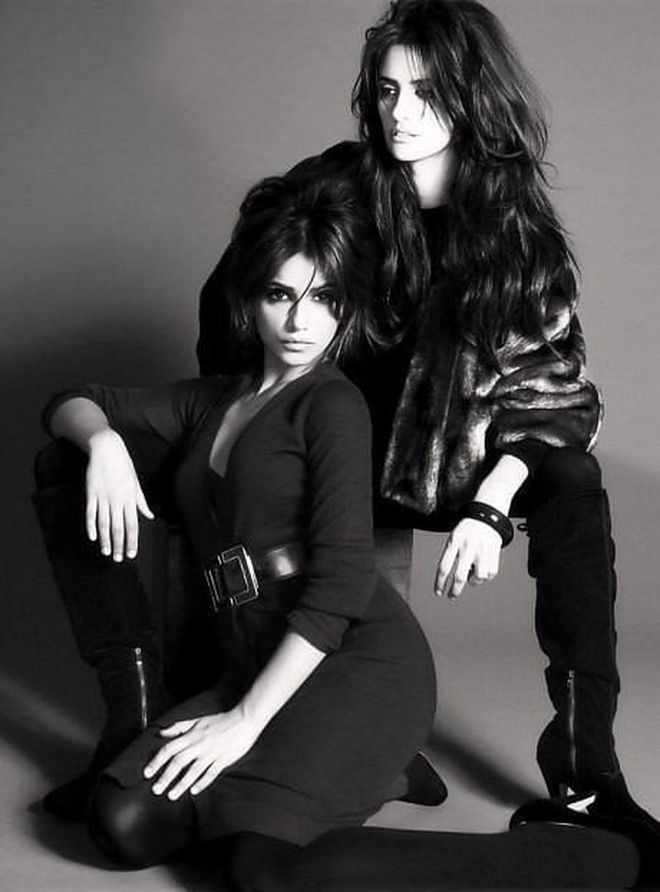Is Eco-Friendly Fashion Really As Sustainable As It Seems?
A closer look at investigating the biggest paradoxes of making environmentally-friendly fashion. By Michelle Varinata


Photo: Reformation
reformation
The future of cruelty-free fashion looks bright as retailers (e.g. Net-a-Porter; ASOS) and top tier designers (e.g. Burberry, Versace and Giorgio Armani) are on the horizon to forgo real fur, silk, cashmere and other animal-derived mateirals for synthetic alternatives. Not only are retailers ahead of the curve, countries such as Norway push the ban on fur farms. Starting in January 2019, TIME reports that San Francisco will become the first largest city in the U.S. to ban fur sales storewide.
Related article: Burberry Confirms It Is Reviewing Its Use Of Fur
Long before retailers, governments and designers put animal rights to the forefront, celebrities couldn't care less about wearing their fur coats. When Fendi launched their couture show in Paris three years ago, actress turned animal rights activist Brigitte Bardot said, "I don’t see how I could wear [Karl] Lagerfeld’s designs while feeding my goats," in an interview with The Guardian.
Pamela Anderson made a strong statement when she abandoned her signature Uggs for her own namesake vegan boots. In addition to letting go of her sheepskin boots and swearing off fur, Pamela narrated a video for PETA about the grisly methods to produce leather in India.
To push her message further, Pamela sent Melania Trump a custom designed faux fur coat from the former's clothing line with Russian faux fur manufacturer Only Me. After the FLOTUS, Kim Kardashian West admits that she's given up on wearing fur after the Baywatch alum sent her a coral faux fur coat.
Always dressed in a Chanel gown at red carpet events, the one thing that Penelope Cruz won't be caught wearing is fur. When she designed a collection with her sister Monica for Mango, none of the garments used fur.

Photo: Mango
penelope monica cruz
Not only is everyone forgoing real fur, the popularity of eco-friendly fashion earned clout thanks to celebrity-loved brands like Reformation, whose clothes graced the bodies of Karlie Kloss, Emily Ratajkowski, Elsa Hosk and Kourtney Kardashian.
Related article: Reformation Finds Its Inner Parisian
Apart from Reformation, H&M salvaged its reputation as a PR-unfriendly brand (due to their past practice of slashing excess inventory) into an influencer-approved darling thanks to their ambitious campaign to plug celebrities into the clothier's eco-conscious gowns at red carpets whether it's the Oscars or the Met Gala. Continuing their agenda to be green, the Swedish fast fashion giant launched their own upscale diffusion line, Conscious Exclusive.
All in all, let's not overlook fashion's number one crusader Stella McCartney, who pulled the most radical move ever: make bags and shoes with solvent-free vegetarian leather. Dubbed alter-nappa, the fabric mimics the classic Italian leather that's used on our shoes, clothes and bags. For more efforts on sustinability, alter-nappa is manufactured with vegetable oil.
From fur-free coats to leather-free footwear, virtually anything can be made without the use of animals. Regardless of the popularity of sustainable clothing, there are paradoxes that challenge the ethics of making eco-friendly apparel.
Case in point, let's not overlook what goes underneath the fibres of your faux fur coat. Packed with glossy shine that mimics the the sheen of real fur, it's pretty obvious from the get-go that synthetic fibres became the first choice to use when manufacturing faux fur. No matter how much we adore the fluffiness of a faux fur coat, design consultant Kate Fletcher left us shook with her research on the amount of energy it takes to make your faux fur coat.
"One kilogram of polyester requires 109 megajoules of energy, with 46 megajoules going toward the raw materials and 63 megajoules used to turn those materials into a finished fiber. Nylon consumes 150 megajoules per kilogram; acrylic, 157."
Technically, the amount of polyester, nylon and acrylic manufacturing takes up way more electricity and water usage than we anticipate. To get its glossy sheen and ultra plush texture, resins and silicones are treated to the polyester-blend "fake fur". Ironically, a single strand of faux fur actually derives from fossil fuels. What's worse is that we aren't aware on the fact that the seafood we buy at the supermarket (or order off the menu) has been laced with polyester-based microfibres, which comes from the emission of microfibres that are released from a single cycle at the washing machine. Perhaps the most scariest revelation is that we are accidentally ingesting polyester from a single sip of tap water. Regardless of our desire for fur-free coats, going for faux fur is ironically, the least sustainable method after all.
Like faux fur, vegan leather is also perceived to be a more sustainable alternative for going leather-free. French shoe designer, Amelie Pichard admits in an interview with Galore that it's not easy being green.
"Making vegan [shoes] does not seem making green or eco-friendly...So, when you make shoes, it’s a big problem."
Pichard isn't completely alone. Stella McCartney admits to Elle that making her alter-nappa shoes is costlier and difficult than making leather footwear as she trains her technicians on how to work with the material on machines.
Given that the majority of vegan leather is composed of PVC and polyurethane (PU), it is unable to be recycled and biodegrade as the solvents inside the fabrics are highly toxic. Also, the vinyl chloride from your beloved PVC shoes is a known carcinogen. Known for being a softening agent in the manufacturing process of vegan leather, phlatates are linked to birth defects, breast cancers, hormonal disruptions and breathing problems.
Safe to say, it doesn't look like we'll be giving up our leather accessories completely unless there are less toxic ways to produce vegan leather bags and shoes.
Related article: Why Is Everyone So Riled Up About Singapore Label, Ivory Lane?
Last but not least, why not we take a closer look at our viscose dresses? As a nice substitute for our silk dresses for daily use, this wood pulp-derived fabric is not as eco-friendly as it seems. Prior to its early commercialisation, it was developed by a French scientist in the 19th century, who later had it taken off the market as the fabric was flammable. With safer methods of developing viscose, it still isn't completely sustainable. Doused in an alkali-base and carbon disulfide, the chemical inside your viscose rayon dress triggers an early development of Parkinson's, stroke and heart attack. Even if it was made with bamboo, viscose is still perceived as a non-sustainable silk alternative as both types are given a low grading by non-profit fashion environmental organization MADE-BY. Even worse, Marks and Spencer, Zara, H&M and ASOS are linked to highly polluted viscose factories in Asia as they produce a lot of wastewater.
As much as we want to save the lives of animals and the planet, perhaps we should think about the story behind the composition of our apparel. Trapped in an era where we consume fashion at a rate faster than Instagram's refresh button and attempting to be sustainable, we still a long way to go to be completely green.